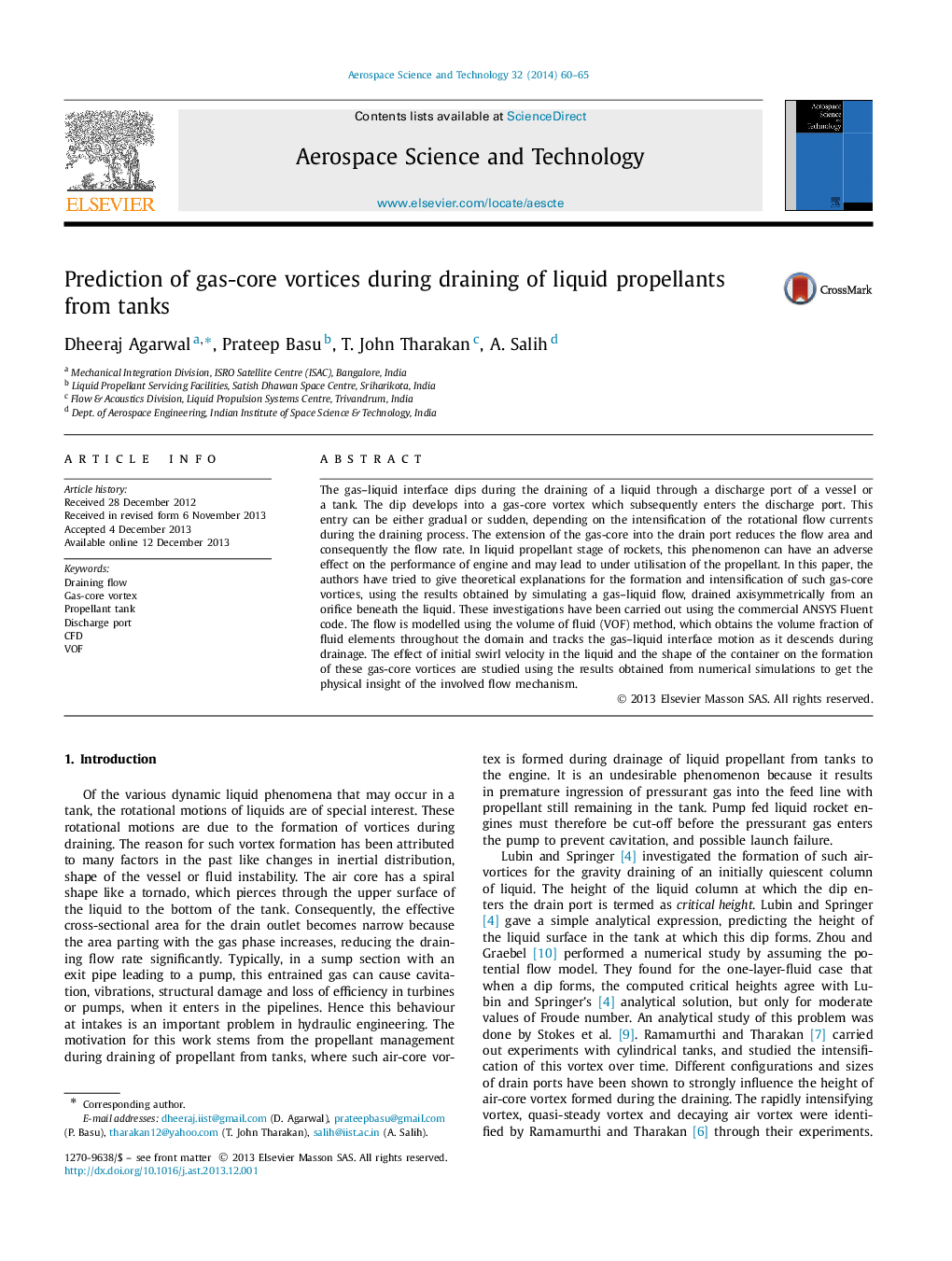| Article ID | Journal | Published Year | Pages | File Type |
|---|---|---|---|---|
| 1718095 | Aerospace Science and Technology | 2014 | 6 Pages |
The gas–liquid interface dips during the draining of a liquid through a discharge port of a vessel or a tank. The dip develops into a gas-core vortex which subsequently enters the discharge port. This entry can be either gradual or sudden, depending on the intensification of the rotational flow currents during the draining process. The extension of the gas-core into the drain port reduces the flow area and consequently the flow rate. In liquid propellant stage of rockets, this phenomenon can have an adverse effect on the performance of engine and may lead to under utilisation of the propellant. In this paper, the authors have tried to give theoretical explanations for the formation and intensification of such gas-core vortices, using the results obtained by simulating a gas–liquid flow, drained axisymmetrically from an orifice beneath the liquid. These investigations have been carried out using the commercial ANSYS Fluent code. The flow is modelled using the volume of fluid (VOF) method, which obtains the volume fraction of fluid elements throughout the domain and tracks the gas–liquid interface motion as it descends during drainage. The effect of initial swirl velocity in the liquid and the shape of the container on the formation of these gas-core vortices are studied using the results obtained from numerical simulations to get the physical insight of the involved flow mechanism.
